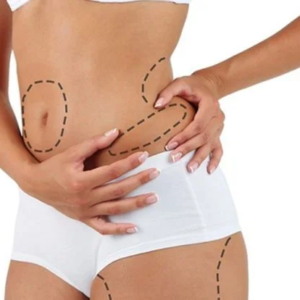5 Major Ways America Can Overcome the Opiate Epidemic

Almost 65,000 Americans died from fatal drug overdoses in 2016 and now it is an epidemic that claims more lives than breast cancer. The number of overdose deaths has nearly quadrupled in the last 18 years and more than 65{f836da2089c4f6ac041f592a32b2c3a6b29da20f6bd03832a46b7a74d907c6fd} are caused by opiate abuse.
The most troubling factor in the nation’s escalating crisis is that around 80{f836da2089c4f6ac041f592a32b2c3a6b29da20f6bd03832a46b7a74d907c6fd} of people in opiate rehab centers abuse were introduced to the drug by way of a physician’s prescription. Prescription painkillers are increasingly being used to treat chronic pain conditions for sufficient timeframes for users to develop dependence and even addiction.
The fact that many people take opiate-based drugs for the first time on their doctor’s orders, they falsely believe they are safer than they actually are.
Despite the intense media coverage of the opiate crisis, many feel that the action taken so far is too little, too late. The Trump Administration’s 2018 budget increased addiction funding by less than 2{f836da2089c4f6ac041f592a32b2c3a6b29da20f6bd03832a46b7a74d907c6fd}, which includes the $500m already appropriated by Congress to combat the epidemic.
When reviewing the recommendations of the Opiate Commission set up by the President alongside other new initiatives springing out around the country, several patterns emerge. Among all the different strategies to fight opiate abuse, there are five common denominators that give a clear indication of the best way forward.
Here they are:
Break the Stigma
Although we have a better understanding of drug addiction today, there is still a degree of stigma attached to drug use. This can be easily combated by raising awareness of the fact that addiction is an illness and educating Americans on how it can be successfully treated.
Because of widely held misconceptions about addiction, people are much more inclined to sweep the issue under the carpet so as to avoid its harsh reality. There are still many people who simply refuse to believe that addiction is a treatable illness and that there is a big element of choice involved in a person taking drugs.
While it may be true that the first time a person uses drugs that they are doing so for recreational reasons, the same cannot be said of an individual who was originally prescribed opiates. In fact, it is the alarming surge of people entering opiate rehab that started using opiate-based prescription drugs which shows most clearly that addiction is not a lifestyle choice.
Support Police Assisted Addiction and Recovery Initiative programs (PAARI)
As part of letting go of the stigma of addiction, out-moded practices of punishing people with substance use disorder with harsh punishments and sentences for relatively minor misdemeanors have to be outlawed.
These days, there are almost 300 law enforcement agencies in 31 states with PAARI initiatives offering detox and opiate rehab treatment for users seeking help from authorities. Many addicts become embroiled in illegal activity as they seek to fund their habit and they can be repeat offenders. Because the old policy of arresting and detaining people with addiction issues failed to yield positive results, PAARI has been introduced as a more effective mechanism to combat drug abuse.
Create Resources for Treatment
Modern-day opiate rehab centers offer several different approaches including holistic therapies and practices. Holistic treatments have been shown to be very effective in promoting long-term recovery and can also be invaluable in the detox process by lessening the intensity of withdrawal.
However, more resources are needed to not only make more people aware of the different approaches to addiction treatment but also to train more addiction specialists. The problem is that compared with other fields of medicine, addiction is not as compelling for medical students. If this field of study is encouraged perhaps through financial incentive, opiate treatment centers can be made more widely available to more vulnerable people.
Enforce Mental Health Parity
For many years, the health insurance industry has been reluctant to provide the same benefits for mental health and addiction treatment as for other medical conditions. However, legislative changes brought about by the Mental Health Parity and Addiction Equity Act of 2008 actually makes it illegal for insurers to discriminate in this way.
Despite this, many insurers work around the law by imposing unreasonable treatment limits or longwinded authorizations to make it difficult for people to claim for rehab costs.
In order to combat the opiate crisis, the government needs to enforce mental health parity with other medical conditions. It makes sense that if we want to treat the rising numbers of people struggling with opiate-based drugs; treatment has to be accessible to them.
Up to 70{f836da2089c4f6ac041f592a32b2c3a6b29da20f6bd03832a46b7a74d907c6fd} of people struggling with drug abuse also have a concurrent mental health condition, known as dual diagnosis. Sometimes the mental illness can be present before someone starts to abuse drugs and other times, the symptoms can develop as a direct result. Having mental health parity will ensure this particularly vulnerable group gets the specialist dual diagnosis treatment they need.
Preserve Life
The ultimate objective of fighting America’s opiate epidemic is to preserve life due to the many thousands of people dying from a fatal overdose. Now that there is an open discussion about the crisis, it has become clear that there is an urgent need for life-saving medications and strategies to reduce harm from an overdose.
There are currently two medications used to reverse opiate overdose symptoms: Naloxone and Narcan. However, not all emergency departments and first response units have access to these medications which can prevent death from a drug overdose.
A harm reduction strategy that has been highlighted by opiate discussion is to increase the number of safe injection sites and needle exchange programs available in the country. Although there are some people who feel these services enable addicts, they nevertheless save lives on a regular basis. People abusing drugs are at high risk of spreading infectious diseases, particularly if they share needles with others.
The Last Word
It is important to remember that addiction is not attractive and perhaps it is our aversion to its reality that has allowed opiate abuse to accelerate and escalate to the extent it has. Addiction is also not the result of moral degradation, a conscious lifestyle choice or an indication of weakness. It is an illness that many thousands recover from to live fulfilling and healthy lives.
We live in a society that remains judgmental at times, despite our greater knowledge of addiction as an illness. This only serves to drive the problem underground and, worse, threatens the lives of tens of thousands more in the process. Although the opiate epidemic in America has seemingly come from nowhere, addiction is an illness that’s been under our noses for generations.




